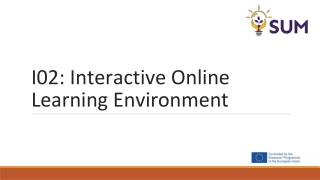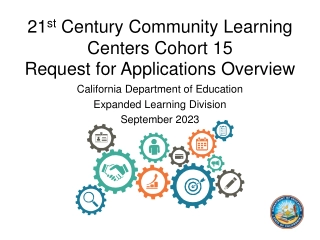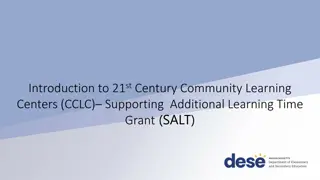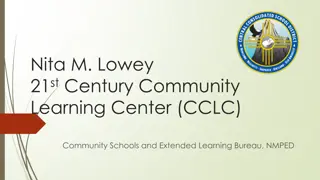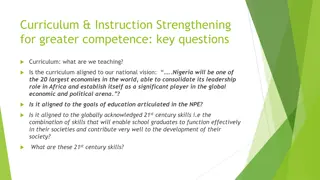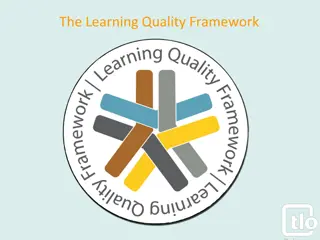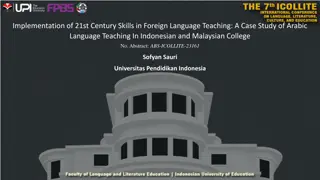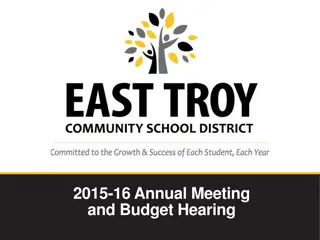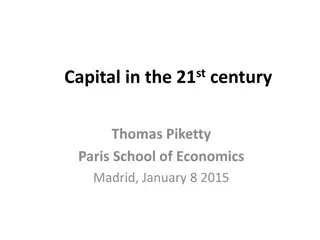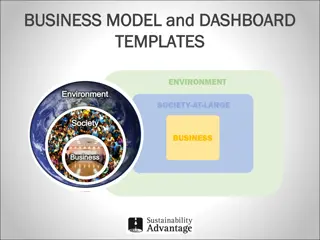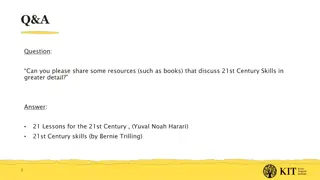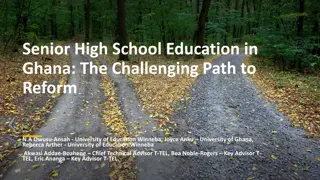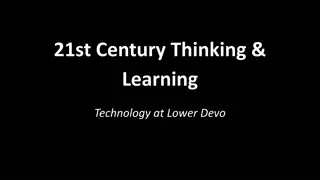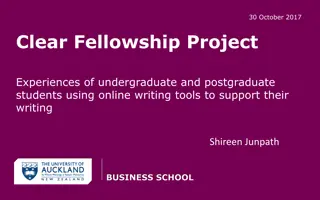Enhancing 21st Century Skills Through Interactive Learning Tools and Writing Strategies
Explore the development of essential 21st-century skills such as communication, collaboration, creativity, and critical thinking in students through engaging activities, virtual manipulatives, and a structured non-fiction writing process. Discover the importance of these skills in preparing students for a constantly changing world where continuous learning is key to success.
Download Presentation

Please find below an Image/Link to download the presentation.
The content on the website is provided AS IS for your information and personal use only. It may not be sold, licensed, or shared on other websites without obtaining consent from the author.If you encounter any issues during the download, it is possible that the publisher has removed the file from their server.
You are allowed to download the files provided on this website for personal or commercial use, subject to the condition that they are used lawfully. All files are the property of their respective owners.
The content on the website is provided AS IS for your information and personal use only. It may not be sold, licensed, or shared on other websites without obtaining consent from the author.
E N D
Presentation Transcript
Developing 21stCentury Skills Presenters: Kimberly Bowen Dr Linda Bailey
Twenty First Century Skills There certain skills that students will need to survive in today s world, these are: Communicationn Collaboration Creativity Critical Thinking
Why are 21stCentury Skills important? These 21st-century skills are more important to students now than ever before. They not only provide a framework for successful learning in the classroom, but ensure students can thrive in a world where change is constant and learning never stops
Braining Camp Virtual Manipulatives https://app.brainingcamp.com/
Braining Camp Web Application Explore ways to make math visual and interactive with digital manipulatives.
Students work Kemoya s Playground using the Geoboard Manipulative Christina s representation of row and columns, using base ten blocks
Students work Jaynell s playground using the Geoboard manipulatives Teavion s representation of a hexagon using the coloured tiles manipulation
Non-fictional Summaries Writing Process
Writing Process Studying a mentor text for features of the text-type ( in this case Information Research Report) Unpacking the writing prompt Reading sources and gathering or code the evidence Organizing the evidence to suit the writing task Thinking about the evidence: Say Mean Matter Planning the writing task Writing a first draft Revising written work
Unpacking the writing prompt
Unpacking the writing prompt We can unpack the prompt using the PASTT Graphic Organizer PURPOSE- The purpose of your article is to describe, or explain. Underline the sentence that tells what you want your readers to understand. AUDIENCE- Who is your audience? Draw a box around the words in your assignment that tell who will read your article. STRONG VERB- The strong verb tells you the purpose of the writing. Circle the strong verbs TOPIC-The topic is what the writing should be about. Underline the words that tell you the topic, the word that reoccurs the most. TASK-What kinds of information will you need to include in your article? Underline the words that tell you the type of information.
Sample Writing Prompt Turn and Talk: Why it is important to figure out what your task is, how will that information affect how you write your article or essay? Have a Go! You are a member of your school s environment club. This month the club wishes to inform the students of how certain activities that people engage in have been affecting the environment. Write an essay describing the effects of human activities on the environment.
Unpacking the Writing Prompt You are a member of your school s environment club. This month the club wishes to inform the students of how certain activities that people engage in have been affecting the environment. Write an essay describing the effects of human activities on the environment.
Gathering the Evidence Reading sources and gathering or code the evidence
Coding the Evidence Look back on your PASTT organizer. What is the Task? _____________________________________ This tells us what kind of information we will be looking for in your reading? What letters could you use to code the evidence? _____________________________________
Coding the Evidence Look back on your PASTT organizer. What is the Task? Describing the effects of human activities on the environment. This tells us what kind of information we will be looking for in your reading? What letters could you use to code the evidence? _____________________________________ A -Human Activities - Effects on the environment E
Source -Habitat loss A E A E
Organizing Text-Evidence Organize the information from the source into a table below: Logging Building Cities Making Roads Destroys forest animals habitat Destroys plants habitat
Thinking about the evidence Think About Connecting the Evidence to Your Writing Purpose: Say, Mean Matter
Say, Mean, Matter Think about the text-evidence. Let s complete the chart to show how the evidence connects to the writing task Say-Mean-Matter What does the source say? What does it mean? How does it matter to my purpose for writing?
In the source it says, In some cases, logging has destroyed the forest animals habitats. When people cuts down the trees, it destroys animals home The human activity of logging, affects the environment, by damaging animal s home
Introduction Features of the Introduction
What is the Introduction A strong start is important. Hook the reader! Use a short story connected to your topic, surprising facts, onomatopoeia or questions (H). Give a brief Definition about whom or what your topic is (D). Inform the reader about why your topic is important (I). Let the reader know the subtopics (sections) that you will be writing about later in the body (S)
Features of the Introduction Hook the reader: Use an anecdote connected to your topic, surprising facts, or questions. Give a brief definition about who or what your topic is. Pretend you are explaining it to someone who has never ever heard of it. Inform the reader about why your topic is important. (Aim to do this without using the word important) Let the reader know the subtopics (sections) that you ll be writing about later.
Body paragraphs Features of the Body
What is the Body? The goal of the body is to use a variety of text structures to teach and inform your reader about your sub topics. Compare and contrast (C), cause and effect (CE) order and sequence (O), problem and solution (P), and description (D) are great tools. Using titles for subtopics/sections great for keeping your writing organized as well. Citing Text-Evidence (TE) shows you have done your research.
Features of the body Label each sub-topic/sub-section with a title. Use multiple signal words/phrases in each subtopic/sub-section. Use specific examples to give more details. Make connections to what you already know Cite text evidence to support topic Say in your own words what is meant by the text-evidence
Conclusion Features of the conclusion
What is the Conclusion The end is here! The conclusion is all about reviewing and giving the reader a call to action. (W) Begin with a wrap-up phrase. (R)Remind the reader about the different sub-sections that you covered. Reinforce how or why your topic is important (I). Suggest a way for the reader to become involved with or experience your topic (HTI). Recommend a way for the reader to learn more about your topic (HTL).
Features of the Conclusion Begin with a wrap-up phrase Remind the reader about the different sub-sections that you covered. Reinforce how/why your topic is important. Suggest a way for the reader to become involved/experience your topic. Recommend a way for the reader to learn more about your topic.
Planning the writing task Planning My Research Information Report
Planning the writing task I will use the Graphic Organizer to plan my writing; observe carefully as I write words and phrases to complete the organizer.



